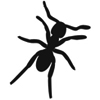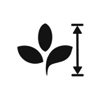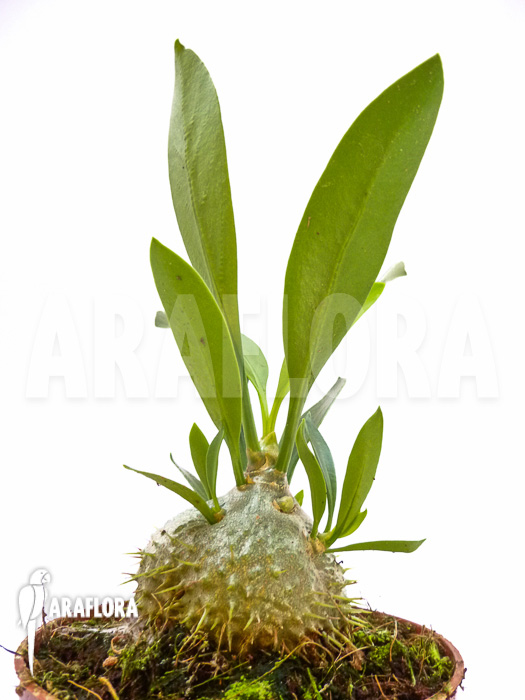Myrmecodia beccarii - Antp25b
Myrmecodia beccarii - Antp25b
Few plants have adapted as well to co-existence with an animal species. The base of the swollen stem develops hollows or chambers which are invaded by the golden ant. This ant plant grows high up in trees where nutrients are scarce. It is endemic to the tropical mangroves of northern Australia.
Currently not in stock
€ 0,00
Keep me up to date?
Araflora will inform you as soon as the product is available again. Please fill in your e-mail address and we will let you know as soon as the product is back in stock. You will get an e-mail message when the product is available again. Unfortunately we cannot say how long this will be or what the price is likely to be.

Receive an e-mail when new stock of this plant arrives.
Share this plant? Press on one of the following icons.
Myrmecodia beccarii plays host to two types of creatures in its swollen tuberous stem. As well as being colonised by ants, it is used by a butterfly which lays its eggs on the plant. The ants carry the eggs inside the plant because they smell like ant’s eggs. The ant plant produces very small white flowers in the axil of its large, shiny leaf petioles. Once the flowers have finished, they turn into red berries. It grows to a height of roughly 80 cm.



Ants are not essential for this species to thrive. Myrmecodia beccarii is used to tropical conditions which can be replicated in the home by placing the plant in partial shade. The temperature in a greenhouse should be around 26⁰ C . The plant will be damaged if it exceeds or falls below. For the best possible growth, humidity needs to be around 75%. The best potting mix consists of a mixture of peat and coconut fibre. You can find both and many other materials in the “Plant accessories” section. Myrmecodia beccarii needs watering regularly but it must not be left standing in water. In other words it needs to be in a pot that drains well. Allow the potting mix to dry out in between watering. Promote growth by adding a small amount of fertiliser once a week. If Myrmecodia beccarii becomes too big, it can be pruned.






 15 cm
15 cm
 10 cm
10 cm












